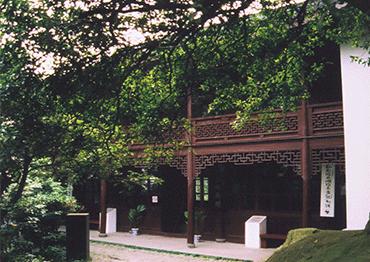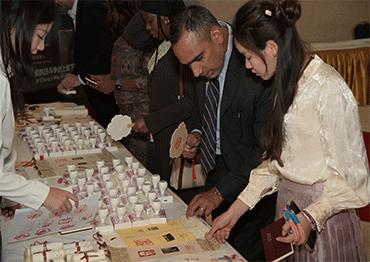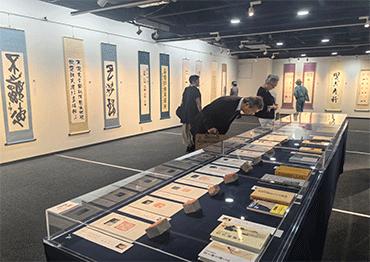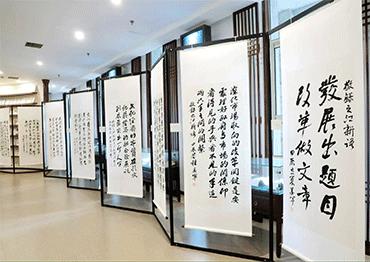In the early spring of 1973, the society received a letter from a Japanese calligraphy delegation. It was during the late stages of the Cultural Revolution and the Xiling Seal Art Society had long ceased formal operations. Yet the Japanese had specifically requested to visit this academic sanctuary, which they reverently called the “Holy Land of Seal Carving in the East.”
That year, 72-year-old member Zhu Zuizhu received the notice and, without delay, rode his bicycle through the narrow lanes of Hangzhou late into the night. He knocked on the doors of seven senior society members scattered across the city. Some were working as accountants in factories, while others taught art in public schools. A few were eking out a living by engraving tombstones.
At dawn, the group of society elders quietly gathered in a pavilion at the foot of Solitary Hill, where calligrapher and seal carver Zhu Zuizhu told his fellow members, “The society can exist without a signboard, but not without integrity.”
On April 12, the Japanese calligraphy delegation led by Toan Kobayashi, calligrapher-engraver and president of the All Japan Seal Engravers Association, arrived as scheduled. Upon seeing the gray-haired Chinese seal carvers seated around the pavilion, and the ancient seals displayed on the tables, the entire delegation stood in solemn respect.
During the exchange, Kobayashi put forward a challenge: to carve the phrase “Though lands and seas divide us, we share the same moon and breeze.” The couplet, by Japan’s Prince Nagaya (684-729), refers to the Chinese monk Jianzhen, who is credited with traveling to Japan against incredible odds to introduce Buddhist teachings, as well as Chinese medicine, architecture and culture. He remains a symbol of China-Japan exchange to this day.
Liu Jiang, honorary president of Xiling and professor of China Academy of Art, volunteered to take up the challenge. His calloused right hand, still marked with chilblain scars from exposure to the cold, held the carving knife firmly. Every stroke carved into the seal stone released a mixture of blood and powdered stone. When the still-warm, blood-tinged seal was pressed onto the rice paper, the Japanese delegation rose and bowed in unison.
Even more moving was what followed. During the group’s visit to the Han Sanlao Stele, Kobayashi suddenly straightened his robes and performed a full kowtow, pressing his forehead to the stone three times. This unprompted act of reverence was captured by a photographer and has since become an iconic moment in the history of Sino-Japanese cultural exchange.
Before leaving Hangzhou, the Japanese delegation gifted the society a rare copy of The Ancient Official Seals of Japan. On the inside cover in handwritten calligraphy was the inscription: “Let hearts speak through blade and brush, let stone and bronze bear witness.” Kobayashi would later become an honorary vice president of the Xiling Seal Art Society.
This moment of cultural exchange would later be remembered as “seal diplomacy.” More than a poignant episode in the society’s century-long history, it became the first unofficial artistic exchange between China and Japan following the normalization of diplomatic relations. The seal engraved by Liu Jiang, bearing traces of his blood, remains carefully preserved in the society’s archives today – an enduring testament to a friendship forged through art amid adversity.
In 1979, at the age of 85, Sha Menghai, a revered calligrapher, became the society’s fourth president. Passionate about cultivating the next generation, Sha taught weekly classes to young members. Under his leadership, the society entered its second golden age.
In 1988, the Xiling Seal Art Society was designated a National Key Cultural Heritage Site. That same year, its 85th anniversary celebration drew over 300 artists from around the world. At the event, Sha spontaneously brushed the phrase “May seal and stone endure forever.” It is regarded as one of his masterpieces.
Zhao Puchu, a prominent Buddhist leader and cultural figure, succeeded Sha in 1993 and led the society with renewed vigor. During its 90th anniversary celebration, Zhao invited artists from Hong Kong, Macao and Taiwan – a first for the organization.
Then in 2011, Rao Zongyi, a 95-yearold master of classical Chinese studies, took the helm. In 2009, the “Art of Seal Carving at Xiling Seal Art Society” was inscribed on UNESCO’s Representative List of the Intangible Cultural Heritage of Humanity.
The Xiling Seal Art Society continues to thrive. At the foot of the Han Sanlao Stele, initiation ceremonies for new members are still held. For every Qingming and Chongyang festival, members from across China and the world return to Hangzhou, united by their shared reverence for the art.
From its founding by four young gentlemen to a society of some 500 members, the Xiling Seal Art Society went on to safeguard cultural relics during wartime and preserve China’s intangible heritage. Its story resembles the bronze vessels it treasures most – weathered on the surface, yet brimming with heritage.
As calligrapher Sha Menghai once said: “Though seal carving may seem a minor craft, it touches upon the roots of our script and the foundation of our culture.”
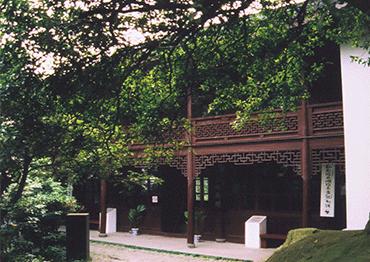
 Old Version
Old Version
